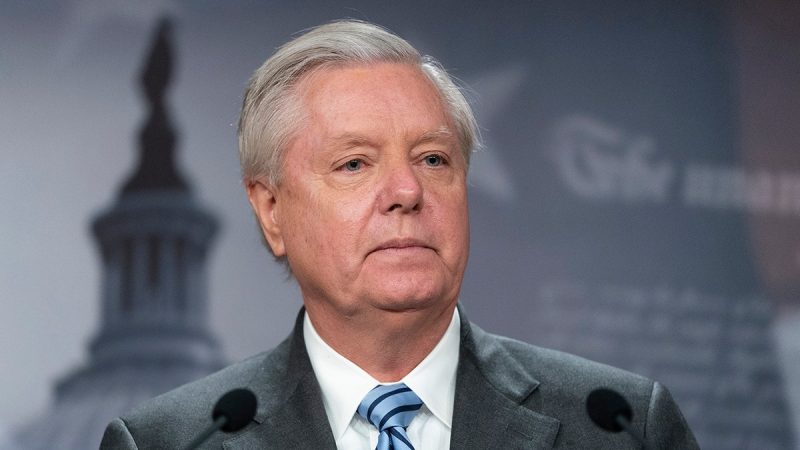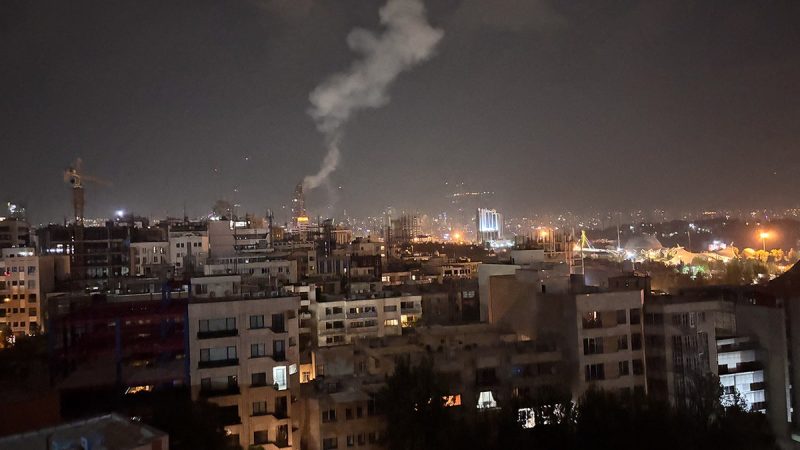

A new report released on Wednesday (June 11) by Canada’s Climate Institute suggests Canada risks missing out on a C$12 billion market for critical minerals should the government not enact policy to drive investment in Canada’s mining sector.
The report outlines a growing need for minerals like copper, cobalt, lithium, nickel, graphite and rare earths, all of which are found in Canada. These critical minerals are all used to produce goods needed for the energy transition, from photovoltaics to electric vehicles.
Overall, to meet this demand, the mining sector will require an estimated US$480 billion to US$750 billion in investment globally. To remain competitive, the institute suggests Canada will need to generate between C$30 billion and $65 billion in investments in upstream projects between now and 2040.
To reduce investor risk and ensure Canada and local communities see a net benefit, the report makes several suggestions aimed at different levels of government.
It recommends the Federal government collaborate with an arms-length financial institution to develop or expand risk-sharing agreements to support mineral assets through price volatility, and provincial governments strengthen mining regulations to mitigate risks and liabilities.
Additionally, it recommends both levels of government facilitate greater participation by Indigenous communities in mining projects through scaling up their resources for capacity and increasing their access to capital.
South of the border, the US Bureau of Labor Statistics released May’s consumer price index (CPI) data on Wednesday. The figures show a worsening of year-over-year inflation as all-items CPI ticked up to 2.4 percent from the 2.3 percent recorded in April. On a monthly basis, it rose just 0.1 percent versus the 0.2 percent the previous month.
Analysts had been expecting a steeper increase, but the numbers were offset by significant declines in energy prices in May.
However, the expectation is that higher figures will be coming over the next few months as the effects of the Trump administration’s tariffs begin to work their way through the economy. The slow response to the tariffs is primarily attributed to retailers working through inventories which were purchased prior to the tariffs coming into effect.
The CPI and other data will play a crucial role in the Federal Open Market Committee’s rate decision when it meets next week, on June 17 and 18. The overwhelming consensus by market watchers is the Fed will continue to hold the current range of 4.25 to 4.5 percent until its September meeting.
Markets and commodities react
In Canada, major indexes were mixed at the end of the week. The S&P/TSX Composite Index (INDEXTSI:OSPTX) was largely flat, posting a small 0.32 percent gain during the week to close at 26,504.35 on Friday. The S&P/TSX Venture Composite Index (INDEXTSI:JX) fared worse, losing 1.16 percent to 721.13, and the CSE Composite Index (CSE:CSECOMP) slid 2.48 percent to 114.88.
US equities were also in negative territory this week, with the S&P 500 (INDEXSP:INX) losing 0.46 percent to close at 6,976.96, the Nasdaq-100 (INDEXNASDAQ:NDX) slipping 0.79 percent to 21,612.68 and the Dow Jones Industrial Average (INDEXDJX:.DJI) sinking 1.38 percent to 42,197.80.
On the other hand, the gold price was up significantly this week, gaining 3.68 percent to US$3,432.17 as investors sought safe-haven assets amid the threat of war between Israel and Iran. The silver price climbed 0.91 percent during the period to end the week US$36.31, although it spiked as high as US$36.86 during trading Monday.
In base metals, the COMEX copper price sank 1.44 percent over the week to US$4.80 per pound. Meanwhile, the S&P GSCI (INDEXSP:SPGSCI) posted a gain of 4.4 percent to close at 568.42.
Top Canadian mining stocks this week
How did mining stocks perform against this backdrop?
Take a look at this week’s five best-performing Canadian mining stocks below.
Stock data for this article was retrieved at 3:30 p.m. EDT on Friday using TradingView’s stock screener. Only companies trading on the TSX, TSXV and CSE with market capitalizations greater than C$10 million are included. Mineral companies within the non-energy minerals, energy minerals, process industry and producer manufacturing sectors were considered.
1. St. Augustine Gold and Copper (TSX: SAU)
Weekly gain: 66.67 percent
Market cap: C$116.31 million
Share price: C$0.125
St. Augustine Gold and Copper is a development company focused on its King-king copper-gold project in the Philippines’ Davao de Oro province. The project consists of 184 mining claims.
According to the most recent preliminary economic assessment from 2013, the company projects an after-tax net present value of US$1.78 billion, with an internal rate of return of 24 percent and a payback period of 2.4 years using a base case scenario of a copper price of US$3.00 per pound and a gold price of US$1,250 per ounce. The company is currently working towards an update to the study.
The most recent news from the project was announced on May 30, when St. Augustine stated that it had entered into an agreement with the National Development Corporation (Nadecor) to acquire a 100 percent interest in Nadecor’s wholly owned subsidiary Kingking Milling, which holds the development rights to King-king. Under the terms of the deal, Nadecor will receive C$9.02 million convertible into 185 million shares.
The project’s exploration and development permits are held by Kingking Mining, which remains a 40/40/20 joint venture between St. Augustine, Nadecor and Queensberry Mining and Development. The release also included details of new ore sales and royalty agreements between Kingking Milling and Kingking Mining.
Shares in St. Augustine rose this week after the company announced Tuesday (June 10) it had entered into a non-brokered private placement for up to 341 million shares for gross proceeds of C$24.9 million.
The company said it will use the proceeds to fund the completion of a feasibility study and organizing financing for the King-king project. The first tranche of the placement is expected to close on June 20.
2. Barksdale Resources (TSXV:BRO)
Weekly gain: 50 percent
Market cap: C$12.88 million
Share price: C$0.105
Barksdale Resources is a copper exploration company focused on advancing its assets in Arizona, US.
The company’s flagship Sunnyside project has been in focus in 2025. The site is located in the Patagonia Mountains of Southern Arizona and covers approximately 21 square kilometers. Sunnyside is located adjacent to South32’s (ASX:S32,OTC Pink:SHTLF) Hermosa project.
The most recent news from the project came on May 13, when the company completed the drilling campaign and expenditures necessary to acquire the initial 51 percent interest in the property as part of an earn-in agreement with Regal Resources. Under the terms, Barksdale was required to complete 7,620 meters of drilling and make C$6 million in total expenditures.
The company has until September 2025 to provide an additional C$1 million in cash payment and 5 million shares to Regal to complete the transaction. Once complete, the company will have 20 days to decide whether to proceed to Phase 2 for the option to increase its interest to 67.5 percent, which it can earn by completing another 7,620 meters of drilling, paying Regal C$550,000 and issuing Regal 4.9 million shares within a two year period.
3. Avalon Advanced Materials (TSXV:AVL)
Weekly gain: 50 percent
Market cap: C$18.91 million
Share price: C$0.03
Avalon Advanced Materials is an exploration and development company focused on lithium projects in Canada.
Its flagship project is its 40 percent owned Separation Rapids lithium project in Ontario, a joint venture with SCR-Sibelco, which owns the remaining 60 percent. The project consists of three primary lithium targets: the Separation Rapids deposit; the Snowbank target, located near Kenora; and the Lilypad project near Fort Hope, which also hosts tantalum and cesium mineralization.
The pair increased the project’s measured and indicated mineral resource by 28 percent in late February.
Although the company didn’t release news this week, its share price jumped significantly during the period.
4. Excellon Resources (TSXV:EXN)
Weekly gain: 48.44 percent
Market cap: C$12.88 million
Share price: C$0.105
Excellon Resources is an exploration and development company working to advance a portfolio of assets around the world.
Its most advanced project is the past-producing Mallay silver mine in Central Peru. The company executed a definitive agreement to acquire the project, as well as the Tres Cerros gold-silver project, in March. Between 2012 and 2018, mining at the site produced 6 million ounces of silver, 45 million pounds of zinc and 35 million pounds of lead before the operation was placed on care and maintenance.
On May 23, Excellon announced it had entered into an offtake and financing agreement with Glencore plc (LON:GLEN) that will provide the final piece of funding to allow Excellon to restart mining operations at Mallay, bringing its available capital to US$18 million.
Under the terms of the agreement, Glencore will provide up to US$7.5 million in funding through a pre-export finance loan agreement backed by concentrate production at the mine. Glencore has also agreed to purchase 100 percent of zinc-lead concentrate until 2028 or 2029 depending on certain conditions.
5. Latin Metals (TSXV:LMS)
Weekly gain: 42.86 percent
Market cap: C$23.77 million
Share price: C$0.20
Latin Metals is a South America focused project generator company with 18 projects across Argentina and Peru.
Its primary focus for 2025 has been on its Argentine portfolio, which includes the Organullo gold project in the Salta province, as well as the Cerro Bayo and La Flora gold projects in the Deseado Massif metal belt in the Santa Cruz province.
The company’s most recent news came on Monday when it announced it had secured drill permits for the Organullo site. The permits provide approval for up to 11,900 meters of diamond drilling as well as other exploration activities. Latin Metals said the permit is a key milestone for the project.
The project is subject to an option agreement with AngloGold Argentina, a subsidiary of AngloGold Ashanti (NYSE:AU), which has the right to earn up to an 80 percent stake in the site. AngloGold is preparing to ‘test targets that have potential scale and alteration characteristics consistent with Tier 1 high-sulphidation epithermal gold systems.’
FAQs for Canadian mining stocks
What is the difference between the TSX and TSXV?
The TSX, or Toronto Stock Exchange, is used by senior companies with larger market caps, and the TSXV, or TSX Venture Exchange, is used by smaller-cap companies. Companies listed on the TSXV can graduate to the senior exchange.
How many mining companies are listed on the TSX and TSXV?
As of February 2025, there were 1,572 companies listed on the TSXV, 905 of which were mining companies. Comparatively, the TSX was home to 1,859 companies, with 181 of those being mining companies.
Together the TSX and TSXV host around 40 percent of the world’s public mining companies.
How much does it cost to list on the TSXV?
There are a variety of different fees that companies must pay to list on the TSXV, and according to the exchange, they can vary based on the transaction’s nature and complexity. The listing fee alone will most likely cost between C$10,000 to C$70,000. Accounting and auditing fees could rack up between C$25,000 and C$100,000, while legal fees are expected to be over C$75,000 and an underwriters’ commission may hit up to 12 percent.
The exchange lists a handful of other fees and expenses companies can expect, including but not limited to security commission and transfer agency fees, investor relations costs and director and officer liability insurance.
These are all just for the initial listing, of course. There are ongoing expenses once companies are trading, such as sustaining fees and additional listing fees, plus the costs associated with filing regular reports.
How do you trade on the TSXV?
Investors can trade on the TSXV the way they would trade stocks on any exchange. This means they can use a stock broker or an individual investment account to buy and sell shares of TSXV-listed companies during the exchange’s trading hours.
Article by Dean Belder; FAQs by Lauren Kelly.
Securities Disclosure: I, Dean Belder, hold no direct investment interest in any company mentioned in this article.
Securities Disclosure: I, Lauren Kelly, hold no direct investment interest in any company mentioned in this article.
This post appeared first on investingnews.com
























